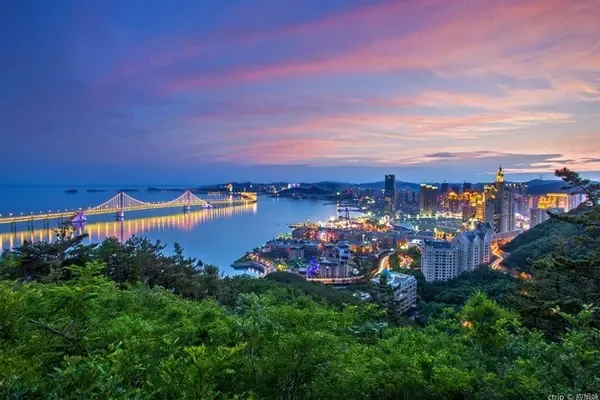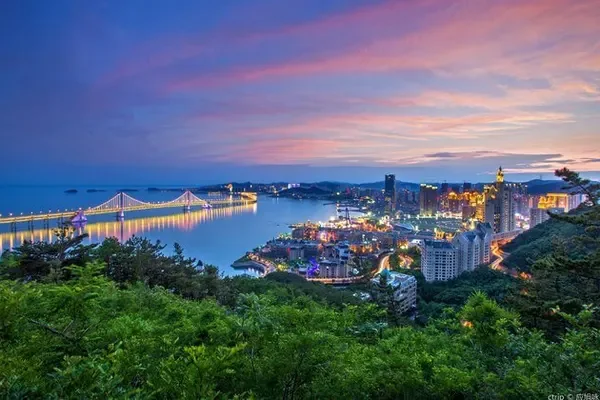The poet Li Bai once sighed: The difficulty of the road to Shu is more difficult than going to the blue sky. It means that the hardships of walking the road of Shu are harder than climbing to the sky. However, if this sentence is placed in the Taihang Mountains, it may be more appropriate.
In early summer, I drove to Wangmangling in Jincheng, Shanxi, and took a trip to the Xiyagou Hangbi Highway, which is known as one of the "ten most dangerous roads in the world" by the outside world. The 7.5-kilometer-long Xiyagou Hanging Wall Road is in the shape of a "zigzag". It is in the hinterland of the steep Taihang Mountains, circling by the mountains, with cliffs on one side and deep valleys on the other. Driving through it feels like a trip " "The gate of hell" is dangerous everywhere.
Wall-hanging roads refer to tunnel roads excavated on the mountainside. Usually, because of the steepness of the mountain, winding roads cannot be built along the hillside, and tunnels can only be drilled on cliffs to build roads. Because after the entire tunnel road is completed, the tunnel road from the valley looks like hanging on a stone wall, so the outside world calls such a road a hanging wall road.
In the hinterland of the Taihang Mountains in Shanxi, where the altitude is less than 2,000 meters, there are continuous peaks and intertwined mountains. The Grand Canyon of the Taihang Mountains runs through the hinterland, often hundreds of meters deep, and the canyons are covered with steep cliffs as straight as knives. These cliffs, like huge stone walls, surround the entire hinterland of Taihang Mountain. At that time, the ancestors of Taihang Mountain took a fancy to such a steep mountainous area. In order to avoid wars and bandits, they migrated from the plain area to this deep mountain valley one after another.
If it weren't for the development of the times and the increase in population, these people who hid in the mountains would still live in a paradise like "picking chrysanthemums under the eastern fence and seeing Nanshan leisurely". Just wanting to get out from the depths of the mountain is more difficult than climbing to the sky. Xiyagou Village is a microcosm of it.
Xiyagou Village is an administrative village in Gujiao Township, Lingchuan County, Jincheng, Shanxi. It is located at the easternmost tip of Shanxi and intersects with Henan Province. In Xiyagou, according to legend, there are immortals who smelt tin and make alchemy here. The mountains here are high and the valley is deep, and the surrounding terrain is steep and complicated. There is no road connecting with the outside world. Since ancient times, people in Xiyagou have lived almost isolated from the outside world.
Let me tell you a real story first: In the early 1960s, a county leader rode a horse over the mountains and came to Xiyagou to visit the villagers here. When returning, the old horse couldn't find the way down the mountain, and was frightened to death by the dangerous mountain on the spot. The county leader was very distressed. After returning to the county seat, the leader managed to collect 3,000 yuan and sent someone to give it to the villagers of Xiyagou, so that the villagers could find a way to build a road to get out. The person who gave the money came to the bottom of Xiyagou, but he couldn't find the way up the mountain. There was no other way but to call out to the villagers on the mountain from the bottom of the mountain to let the villagers put down a basket from the top of the mountain, tie up the 3,000 yuan wallet, put it in the basket, and then hang it up the mountain.
The story is a bit sad, but before the road was built in Xiyagou, it was indeed an insurmountable practical problem. Because there is no road, the villagers in Xiyagou live a very poor life. The fruits they grow can’t be eaten by themselves, so they can only be thrown away to rot; the precious Chinese medicinal materials on the mountain can only be used as firewood by the villagers; Can't go down the mountain to trade; villagers get sick and can't be sent down the mountain for treatment; young men can't find a partner because the girls down the mountain don't want to marry up the mountain. It is said that there was a bride at the bottom of the mountain who accidentally fell into a ravine while climbing the mountain when she was going up the mountain for a wedding. The wedding turned into a funeral in an instant.
Xiyagou Village consists of 17 small natural villages with about 800 villagers. After the county leader sent 3,000 yuan, the villagers vowed to build a road to communicate with the outside world. From 1962, under the leadership of the village leaders at that time, the villagers of Xiyagou began an extremely long road construction process.
The first time the road was built, the villagers dug out a narrow path on the cliff. It is said that after the road is built, only the most courageous people dare to walk. At that time, there was a villager who wanted to drive more than 20 pigs down the mountain to sell through this narrow path, but after driving less than one mile, half of the pigs fell to the edge of the cliff and died.
The second time, the villagers continued to build the road in another direction, but only after a short period of time, they found that the wild wolves in the valley were attracted, so they had to block the road again. Now in Xiyagou, there is still such a mountain road called "Wolf Road" by the villagers.
For the third time, the villagers in Xiyagou decided to build a road by digging holes in the mountains. As a result, they only excavated more than 100 meters, and found that the gravel could not be transported away, and the dust could not be removed from the caves. Finally, they had to give up. The idea of digging a hole. The cave dug out became a "sheep cellar".
After 20 years of road construction, the result is still nowhere to go. Until 1982, after the reform and opening up, the villagers of Xiyagou, under the guidance of engineers and technicians, decided to build a wall-hanging road along the mountain. The village leaders at that time mobilized the entire village, mortgaged the village office, and the villagers donated their savings to organize a death squad for road construction, vowing to fight the final battle against the mountain.
Villagers who build roads first have to hang ropes from the top of the mountain, hang themselves on the mountainside, and then dig out an operating surface for people to stand on the mountainside. With the operation surface, the villagers who dig the hole are put into the hole with ropes, and the slag excavated is discharged down the valley from the hole in the work surface. In this way, there is a working face at intervals of more than ten meters. The villagers inside dig holes in two directions with their backs facing.
It is easy to say, but it is quite difficult to dig. Because blasting was not allowed, the entire wall-mounted road in Xiyagou was excavated by the villagers using hammers and steel drills, one hammer and one chisel. The hanging wall road in Xiyagou is in the shape of a "zigzag" and is divided into three levels: upper, middle and lower. The upper and middle parts pass through the mountain, with a length of about 2,000 meters. This is how the villagers dug a tunnel out of the cliff with their own hands.
There is a statistic in Xiyagou Village. In order to build this mountain road, the whole village invested a total of 596,000 yuan, recruited hundreds of villagers to volunteer for 2.108 million man-days, and transported 230,000 cubic meters of earth and stone. villagers. After ten years of unremitting efforts, in 1991, Xiyagou was finally connected to the road. When the first car drove into Xiyagou Village that year, one can imagine how happy the villagers were. Because of the 30-year hard work of several generations, the dreams of the ancestors became reality at that moment.
The original Xiyagou wall-hanging road is still paved with gravel, and the tunnel of more than 2,000 meters is irregular, so driving here really requires a bold and careful old driver. It is said that when the highway in Xiyagou was first opened to traffic, a driver once had calf cramps after driving one trip, and vowed never to drive this road again. In 2003, the government stepped in to renovate the Xiyagou Highway. The road surface was turned into a cement road, the dangerous rocks on the mountain and in the tunnel were cleaned up, protective fences were built on the edge of the cliff, and the speed limit in the tunnel was stipulated. transit time. For example, you can't drive at night, you can't drive in windy and rainy weather in the mountains, you can't enter private cars at will, etc.
Around Wangmangling, there are seven wall-mounted highways, among which Xiyagou Highway was the first to be built, with the largest project volume and the longest construction time. Today, Xiyagou Hanging Wall Highway has become a part of Wangmangling Scenic Area. Tourists can easily take the sightseeing bus of the scenic spot to visit the entire Xiyagou Hanging Wall Highway.
It is very common to walk on a road, but it is no longer common to walk on the Xiyagou Guabi Highway, because it is a road that is difficult to reach the blue sky, a "heavenly road" full of human miracles.
Tips:
Address: Xiyagou Village, Wangmangling Scenic Spot, Lingchuan County, Shanxi
Tickets: Tickets for the scenic spot are 110 yuan (including Xiyagou Hangbi Highway Scenic Spot)
About the Author:
Lu Jianhua
Director of China Photographers Association, senior photographer, columnist of "China Photographer" magazine's tourism geography column, director of Wuxi Art Photography Society, signed author of Sina We Media, ranked 20th in the June Sina Tourism Vertical V influence list, Sohu No. 15 in the national author list, Miaopai master, Toutiao author, signed author of Tencent We Media, Tongcheng traveler, Ctrip traveler, eLong travel expert.
Sina Weibo Name: @卢建华照片
Official account: ljhsy02


